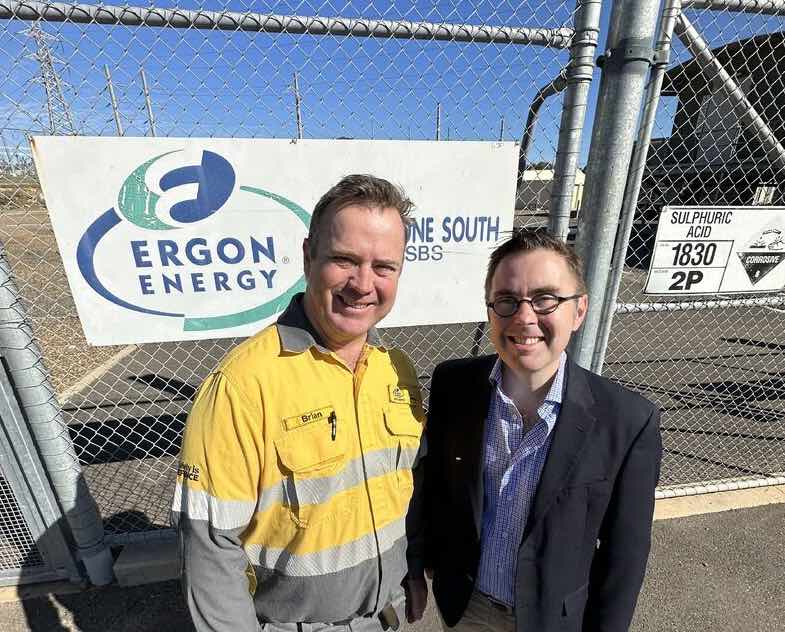
As Queensland races to accommodate all the big stuff it will take to get to 80 per cent renewables by 2035 – 22GW of large-scale wind and solar, big batteries, pumped hydro – it is also chipping away at accommodating more rooftop solar on its coal dominated grid.
This week Energy Queensland installed a 4MW/8MWh network connected battery in the region that hosts the state’s biggest coal plant, Gladstone, which – in the spirit of the energy transition – also happens to be one of its top 20 rooftop solar postcodes.
The new South Gladstone network-connected, two-hour battery is one of 12 being rolled out across regional Queensland communities, as more and more of the state’s households install solar on their rooftops.
It follows the installation of a 2MW/4MWh battery in the central highlands town of Emerald, which has a population of around 15,000 and currently counts nearly 2,000 solar systems on homes and small businesses in the town.
Quiet achievers
Less flashy than their big battery cousins, grid-side community-scale batteries help to make the best use of rooftop solar where it is generated, while also allowing more homes to install solar in PV-congested parts of the grid.
They also work to stabilise local grids and keep power prices down by storing excess solar to be used in peak periods.
“As more and more households adopt electric vehicles, solar and batteries, what happens locally will need to be orchestrated to help the wider energy system,” said Paul Martyn from the Queensland government’s energy department in a post on LinkedIn on Wednesday.
“Distribution level batteries of all types, stand alone, household/business, or even moving (ie. EVs) will play a critical part of our system’s reliability – and capturing the value from renewables.
“Together with Energy Queensland, the Department is working to unlock more opportunities for customer energy resources (or CER), and importantly, a more integrated and inclusive energy system,” Martyn said.
This is good news, considering the huge task ahead of the state which still has a huge dependence on coal and a long way to go to meet its series of renewable energy targets.
That said, Queensland has a pretty patchy record on creating an “integrated and inclusive” grid, particularly for consumer-side assets.
Rather, industry insiders have aired concerns that Queensland is looking at distributed energy resources from the perspective of worst case scenarios, which – as RenewEconomy reports here – approaches all connected electrical devices “a problem that must be controlled.”
Much more work needed in that department, to be sure.

Sophie is editor of One Step Off The Grid and deputy editor of its sister site, Renew Economy. Sophie has been writing about clean energy for more than a decade.



